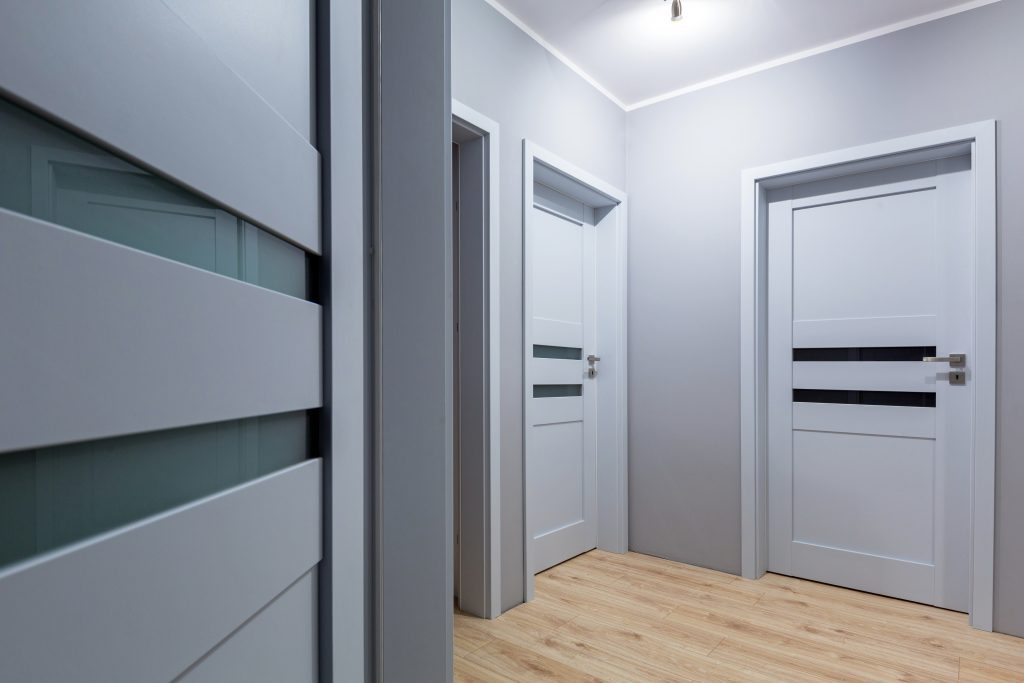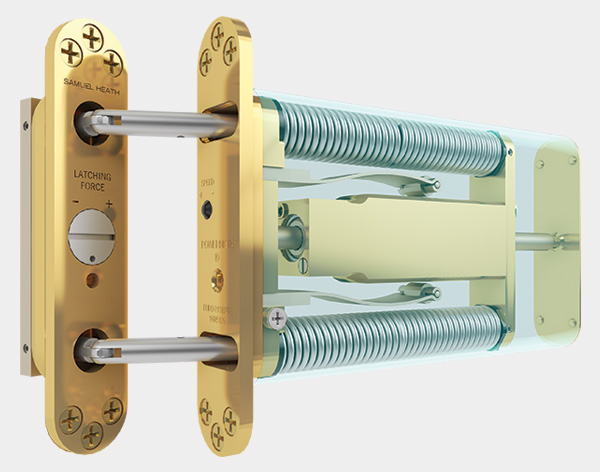Reduce vandalism, reduce cost

The increasing adoption of concealed door closers in social housing is largely due to the simultaneous rise in the vandalism of traditional overhead, surface-mounted door closers.
Having to repeatedly repair or replace overhead door closers is costly for housing associations. This has instigated a shift towards safer concealed door closers that can’t be seen or easily accessed, so are highly unlikely to be the target of vandalism.
Samuel Heath has been designing and manufacturing concealed door closer technology for over 60 years. We supply many different sectors including hotels, education and health facilities, but it is in social housing that we have seen vandalism driving the increased demand for our expertly engineered products.
What is a concealed door closer?
A concealed door closer is fitted within the door leaf and the door frame to connect the two, rather than being surface mounted above the door. They do the same job of regulating the speed of a door’s swing and can be used in fire and non-fire doors.
Surface-mounted overhead door closers are clearly visible and easy to vandalise, whereas concealed door closers are tucked away out of sight. There are also personal safety issues associated with overhead door closers as they present a ligature risk.

How does a concealed door closer prevent vandalism in social housing?
Because a concealed door closer is neatly hidden inside the door and frame, it can’t be seen when the door is closed. When the door is open it is hardly noticeable.
Vandalism is often a spontaneous act. In a social housing setting where there are unlikely to be witnesses, overhead door closers become easy vandalism targets, or even just accidental casualties of boisterous mischief. A concealed door closer would not be perceived as a target or be subjected to accidental damage.
It is not always spontaneous vandalism that instigates damage to overhead door closers. Some tenants actively remove them because they don’t like having a door that automatically closes. This would not be possible with concealed door closers.
Safety concerns of a damaged overhead door closer
Damaged overhead door closers create significant safety issues in social housing, particularly when attached to fire doors. A damaged overhead door closer negates the functional integrity of the fire door as a fire-spreading deterrent. The entire door must be replaced to meet safety regulations, which is extremely costly. For non-fire doors, having to repair or replace the door closer each time one is damaged is also costly and inconvenient to both residents and maintenance teams.
Concealed door closers are not subjected to such damage, so the integrity of fire doors is not compromised, making social housing settings safer.

The cost savings of concealed door closers in social housing
While overhead door closers are cheaper to buy than concealed door closers, in the long term that saving becomes a false economy.
One overhead door closer has the potential to be wilfully damaged or detached multiple times. The repeated cost of a repair or new product, as well as the labour and call-out to complete the work, is significant for maintenance managers or property owners. It is money that would be better spent elsewhere to benefit social housing provision.
The cost of repairs and replacement of overhead door closers has the potential to far exceed the investment in a high performance concealed door closer over a social housing property’s lifetime. By reducing the potential for vandalism, the concealed door closer reduces cost.

Concealed door closers save space in social housing settings
Samuel Heath concealed door closers don’t require the space that is needed to accommodate traditional overhead door closers. This can be a significant benefit in tight spaces such as halls, corridors and toilets, especially if the door opens against a wall.
The Powermatic R100 from Samuel Heath
The Powermatic R100 from Samuel Heath is a market leading controlled, concealed door closer. It is proven to be exceptionally reliable with many unique and beneficial features for both fire and non-fire doors in social housing settings.
For fire and safety it is CE (Conformité Européenne) and UKCA (UK Conformity Assessed) marked, and successfully type tested to BS EN 1154: 1997 power size 3. It has also been approved for use on one hour and half-hour fire doors.
The Powermatic R100 has an ultra-efficient mechanism, is suitable for latched and unlatched installations, and can be used with electronically powered hold-open devices. The closing speed and power latching action are both adjustable and the product has been endurance tested to 500,000 cycles.
Each unit is sold with a 10-year guarantee.
Speak to Samuel Heath about reducing social housing costs with the Powermatic R100
Call 0121 766 4200 or email info@samuel-heath.com to discuss your concealed door closer requirements.
Samuel Heath: Keeping people and buildings safe.
